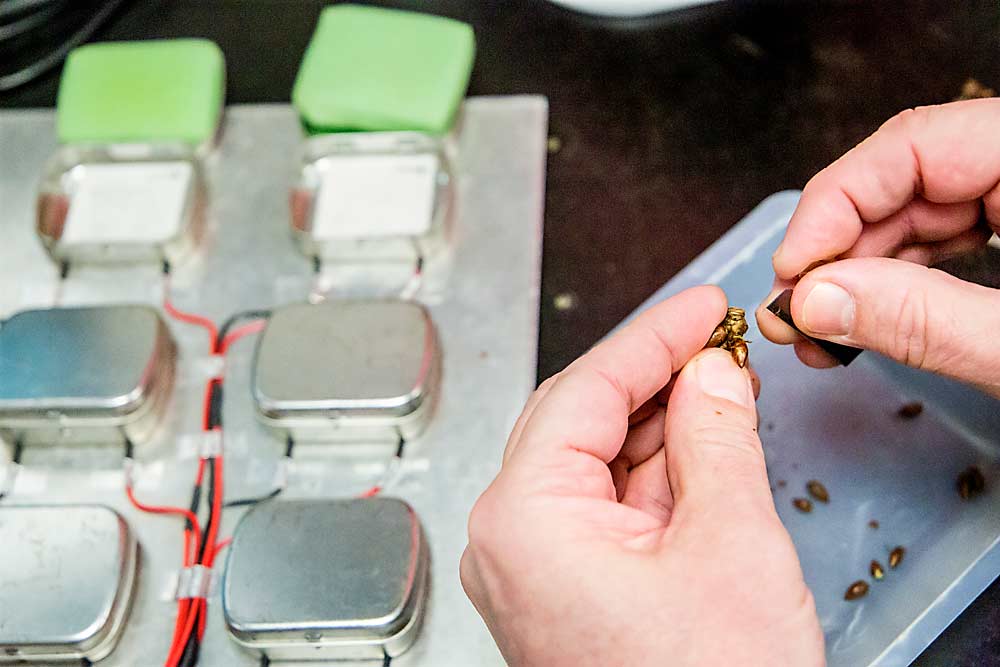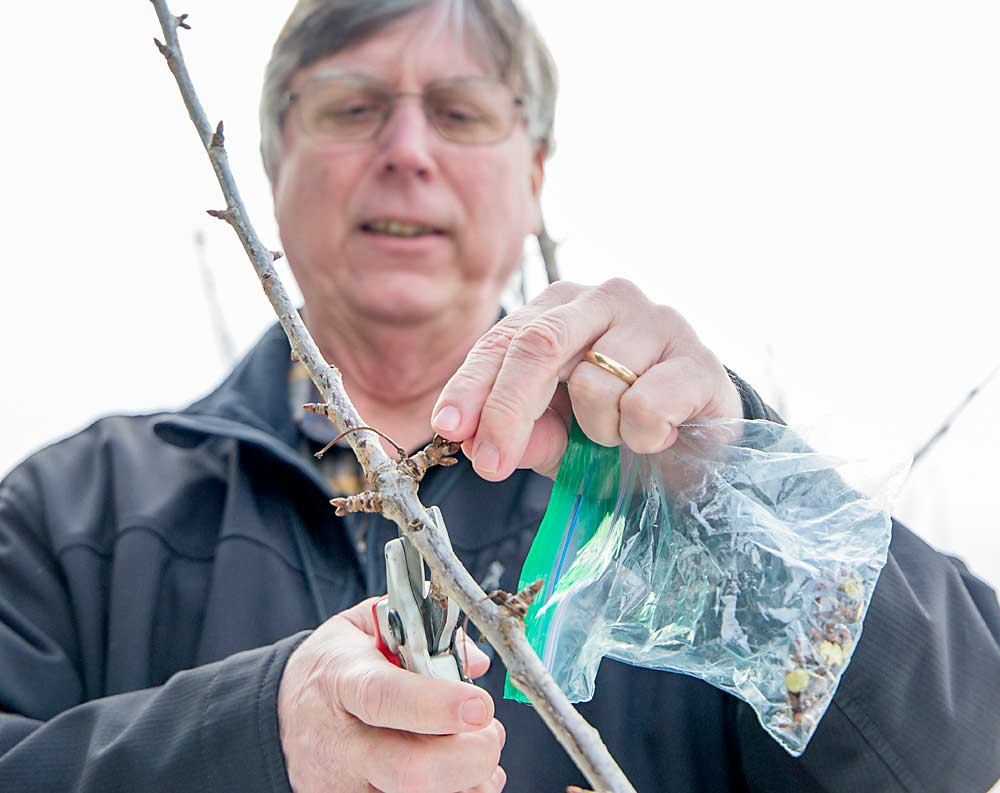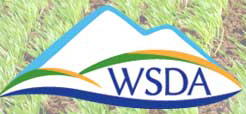
By this fall, cherry growers in the Northwest should have a site-specific online model to help them determine when they should turn on their wind machines or fire up their orchard heaters, something their grape-growing colleagues have had for several years.
“That’s what we want,” said David Gibeaut, the Oregon State University researcher building the model.
For three years, Gibeaut has been tracking the temperatures at which buds freeze throughout the year and compiling the data in a vast database to fuel the model, which will be available on AgWeatherNet. It will be one of the first mobile app services for the Washington State University-run weather network, allowing growers to better personalize their use of the model.
To determine freezing points, he collected samples throughout the season, separated buds from clusters using a razor blade and packed them in foil inside temperature-sensitive chambers. He then placed the chambers on trays in a freezer that gradually brings down temperature. When a flower within the bud freezes and dies, it releases a tiny amount of heat, which those chambers are designed to detect and record.
The model will be tied to phenological stages of bud development, especially as the tree emerges from dormancy in the spring. How long a tree spends in dormancy is one of the mysteries of cherries, Gibeaut said. By the time a grower sees buds swelling, dormancy is already over.
“That’s one of the things we’re trying to understand better,” he said.
Knowing when dormancy ends will also allow growers to use the online cherry model to predict the timing of bloom and harvest.
Pending continuing project funding, his work is funded with $370,000 worth of grants from the Oregon Sweet Cherry Commission and the Washington Tree Fruit Research Commission.
In the future, he plans to build similar models for pear and blueberry.
Grape growers have had a cold hardiness model for several years on AgWeatherNet, allowing them to predict how cold their vines can get before they are damaged.

Gibeaut and AgWeatherNet began operating a minimal web-only beta version of the cherry model last year. They envision the final version being interactive with cherry growers, learning from their inputs and constantly fine-tuning itself. “Part of what’s nice about it is this lends itself to that,” Gibeaut said.
At the same time, the cherry model will help usher in a new era for AgWeatherNet, said David Brown, hired as the new director in November.
“This is pretty exciting for us,” Brown said.
First, the weather service will put a greater emphasis on development of mobile apps in addition to the traditional web page platform, he said. Over time, the service will stitch together data from several surrounding weather stations and grower input to make weather predictions specific to a block or orchard — what Brown calls a “management unit” — not a weather station several miles away.
“By delivering weather and tools specific to a management unit, we can also solicit grower feedback on this app,” Brown said.
The program will learn about block-specific weather conditions, crop, variety, management, phenological stage, fruit quality and yield. The more growers interact with the app and provide data, the better the models and tools will perform.
Currently, growers pick from one of the 176 automated stations nearest to them, punch in their data and get results. For any modifications specific to their location, they must do those in their heads.
If things go as planned, Gibeaut’s cherry model will be the second mobile-first AgWeatherNet app, Brown said, behind a labor-oriented heat stress app scheduled for a beta launch in May. However, the cherry program will be much more interactive in the end. •
—by Ross Courtney









Leave A Comment